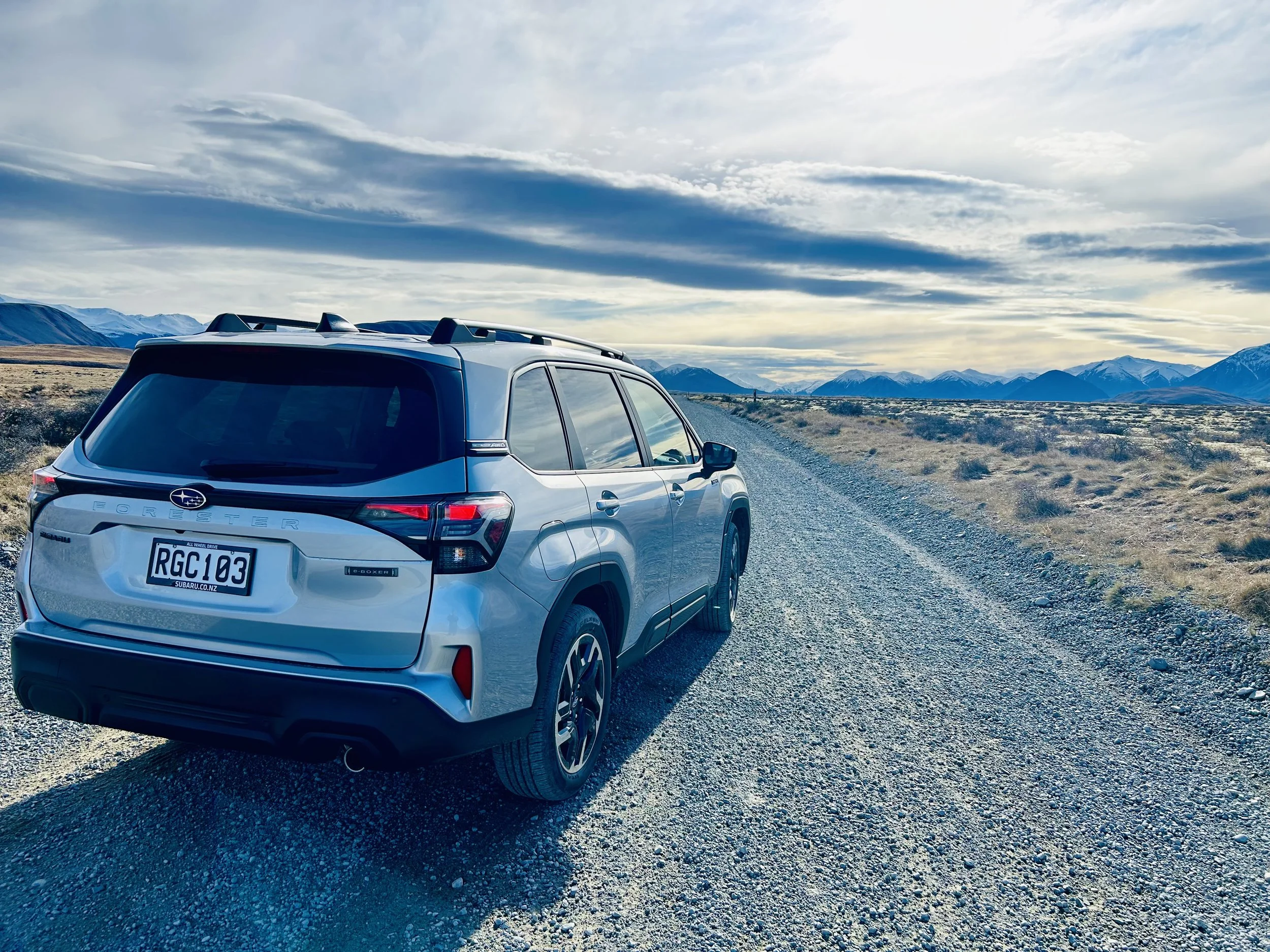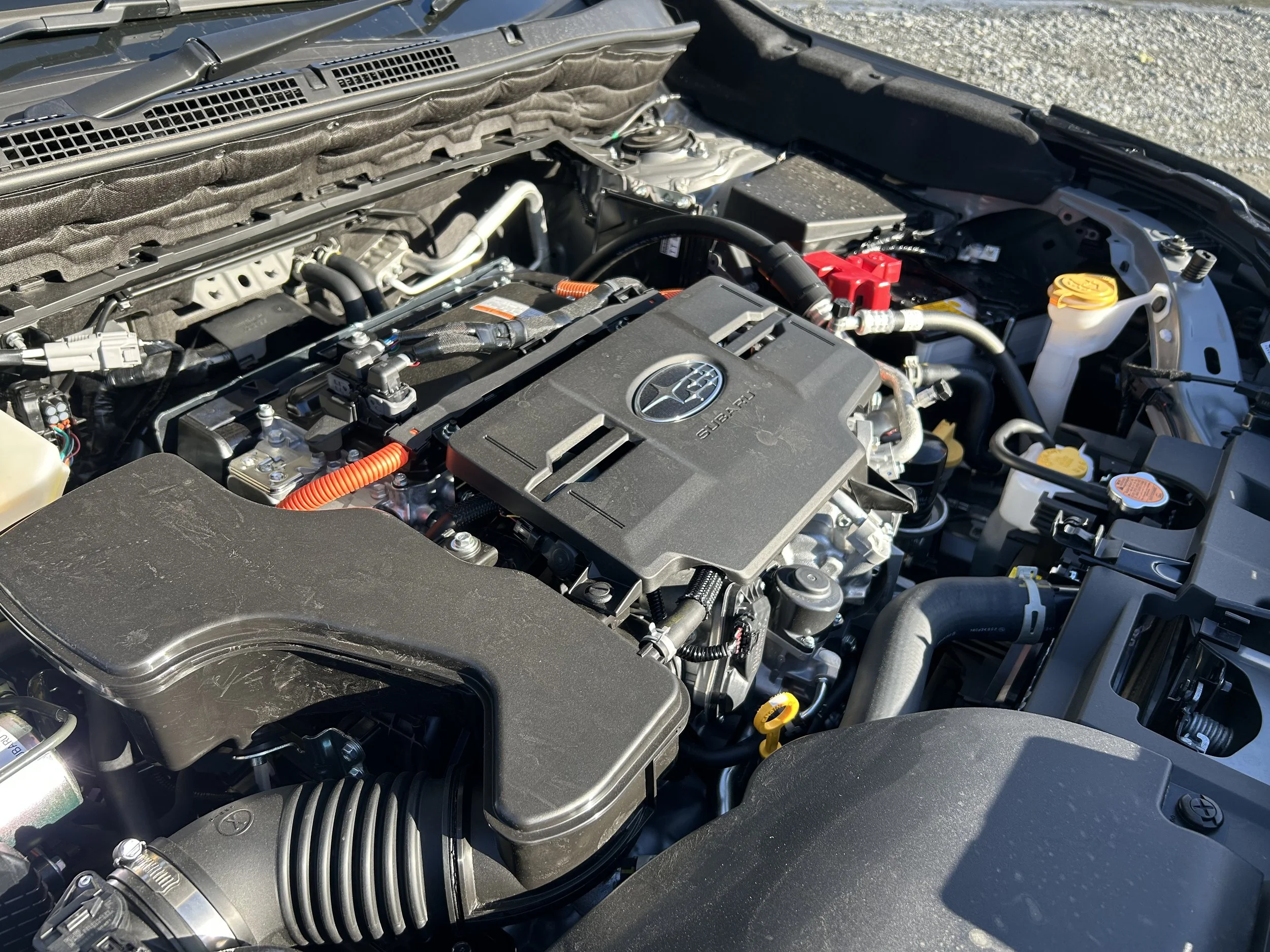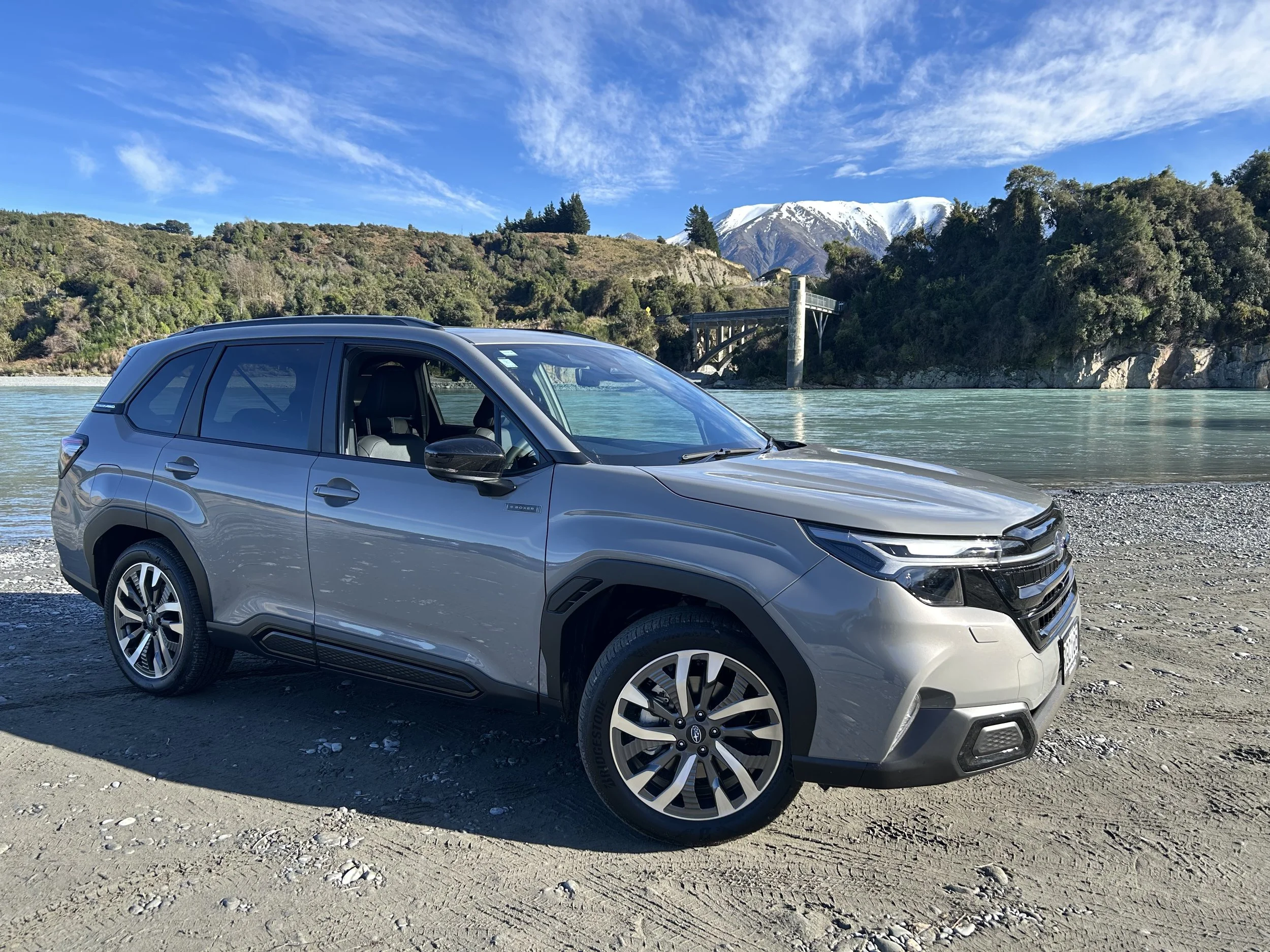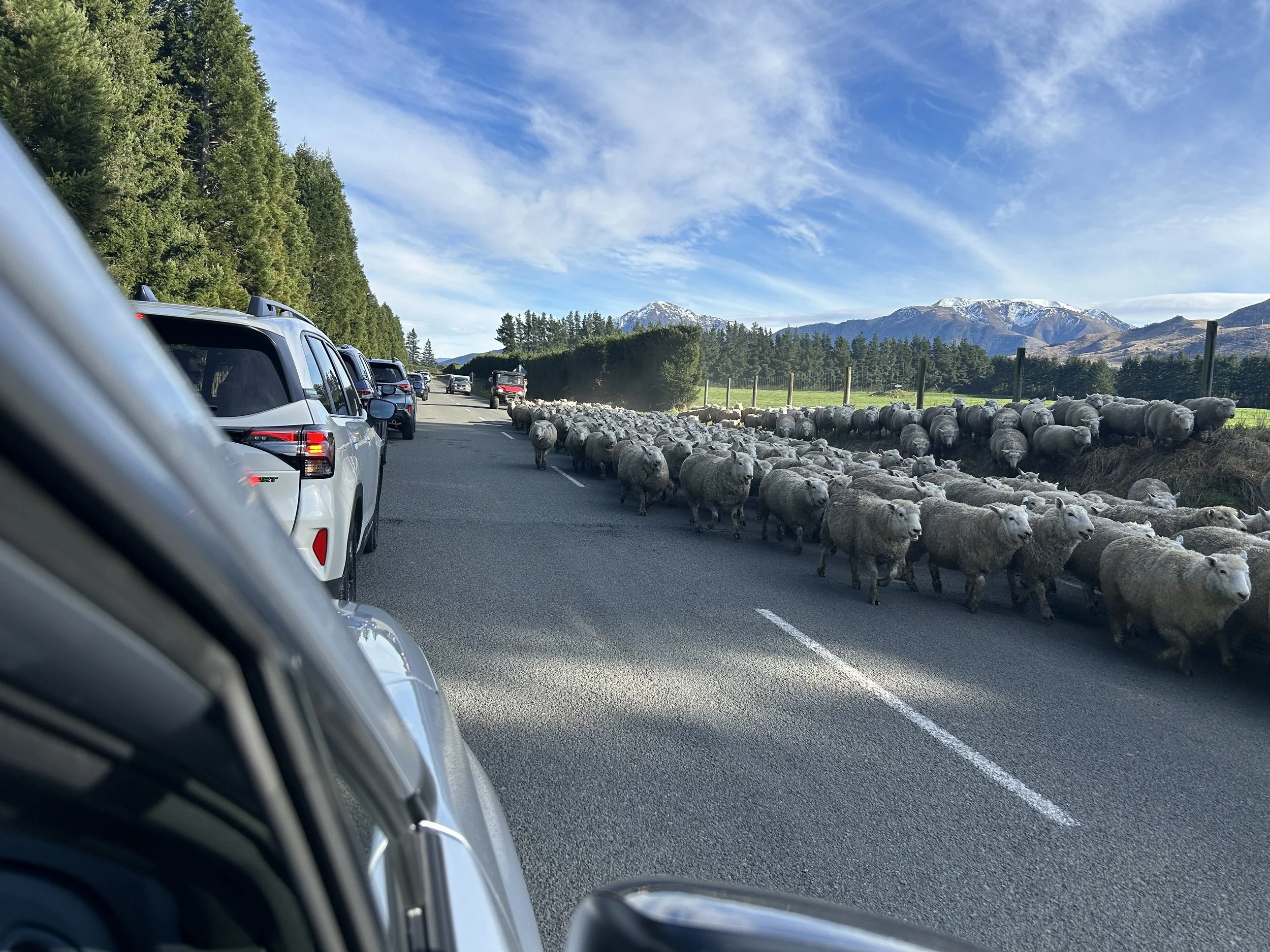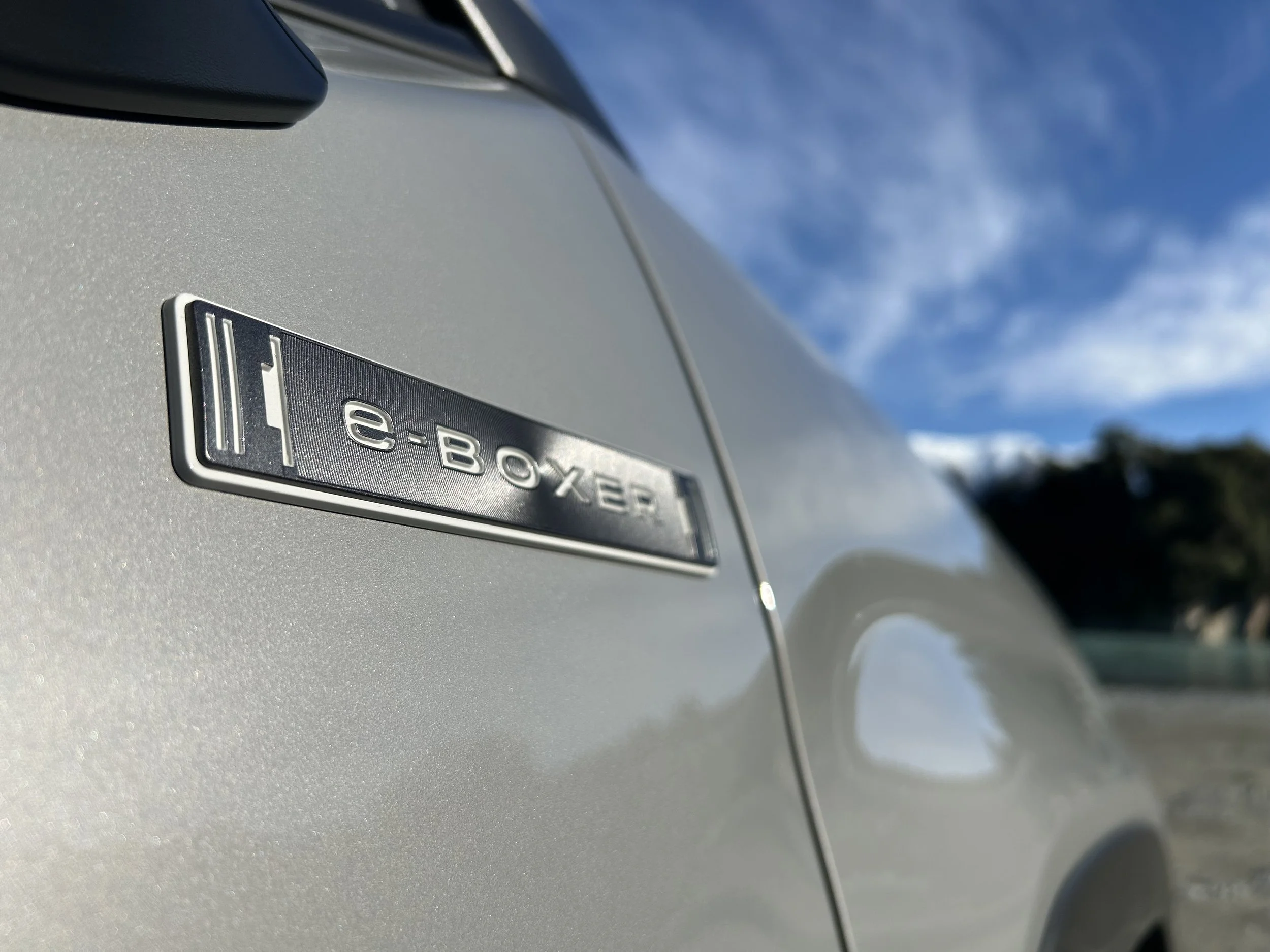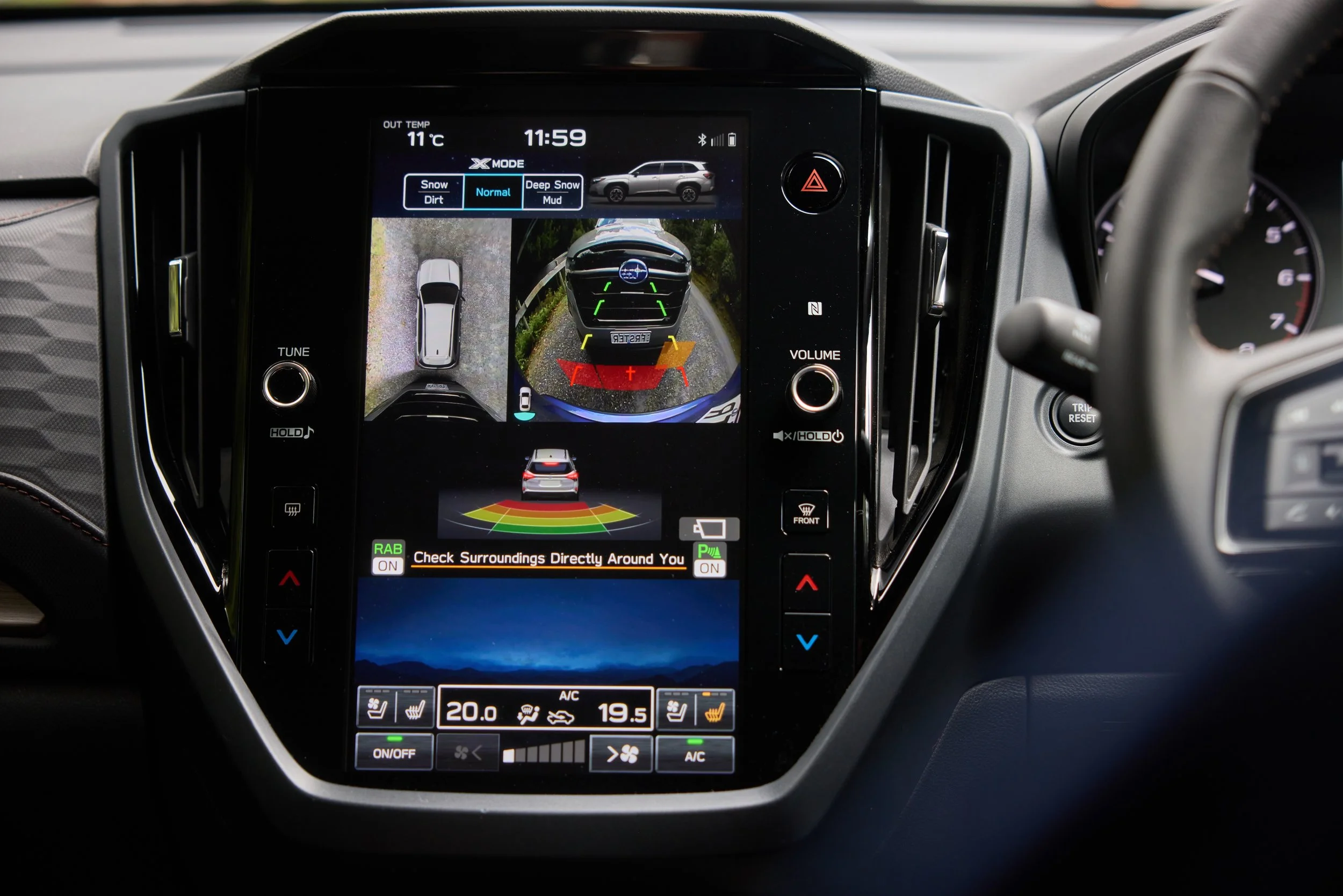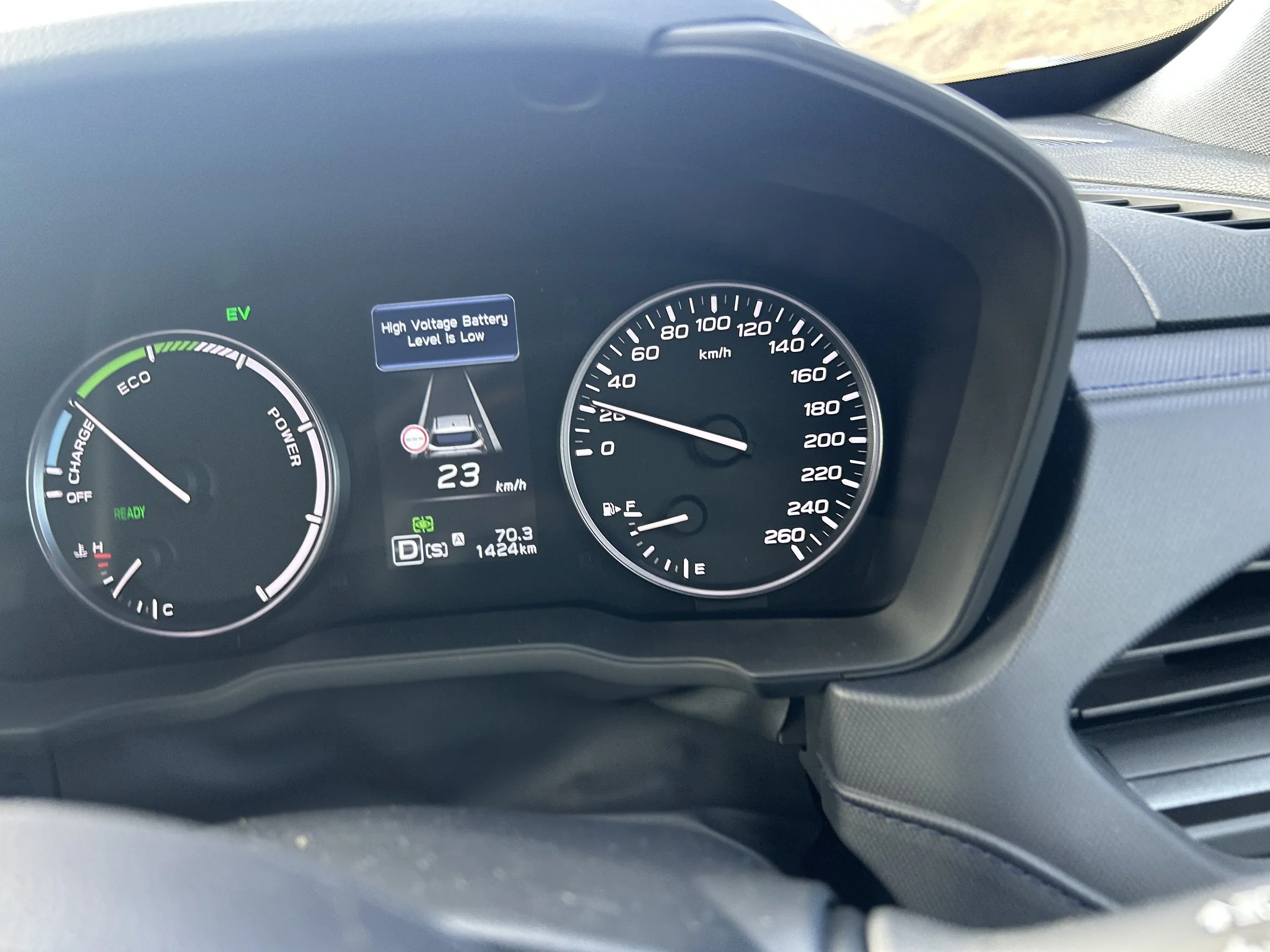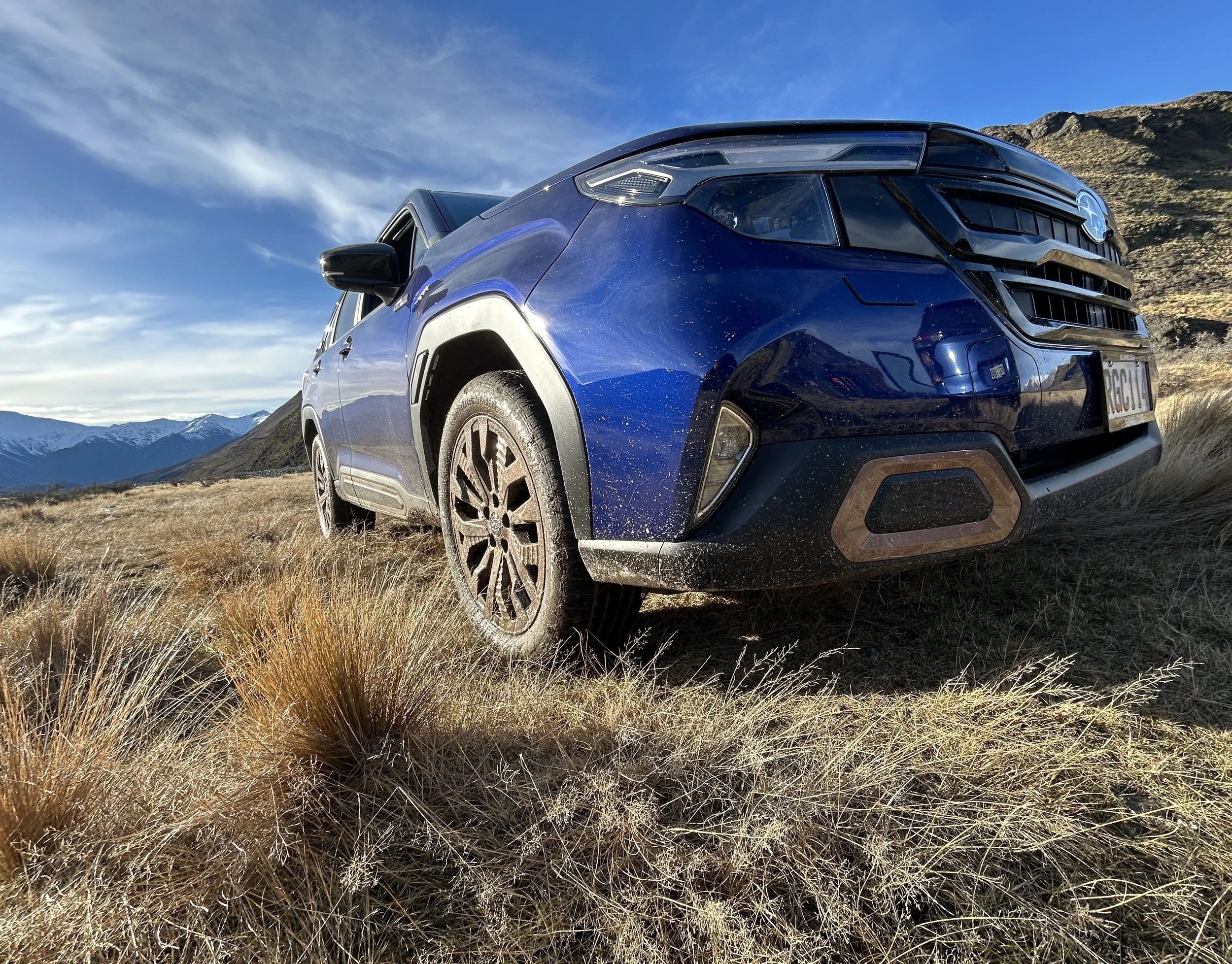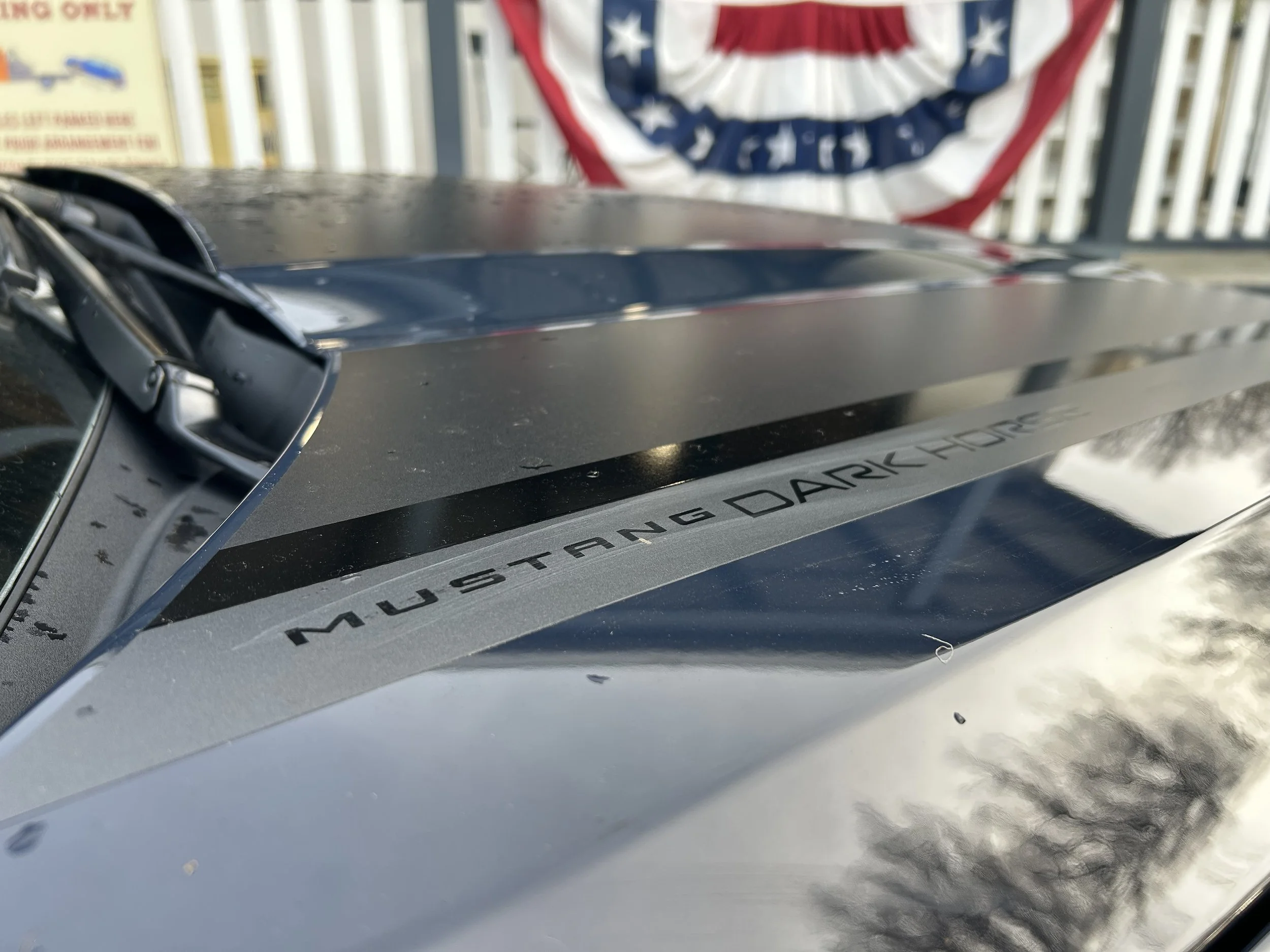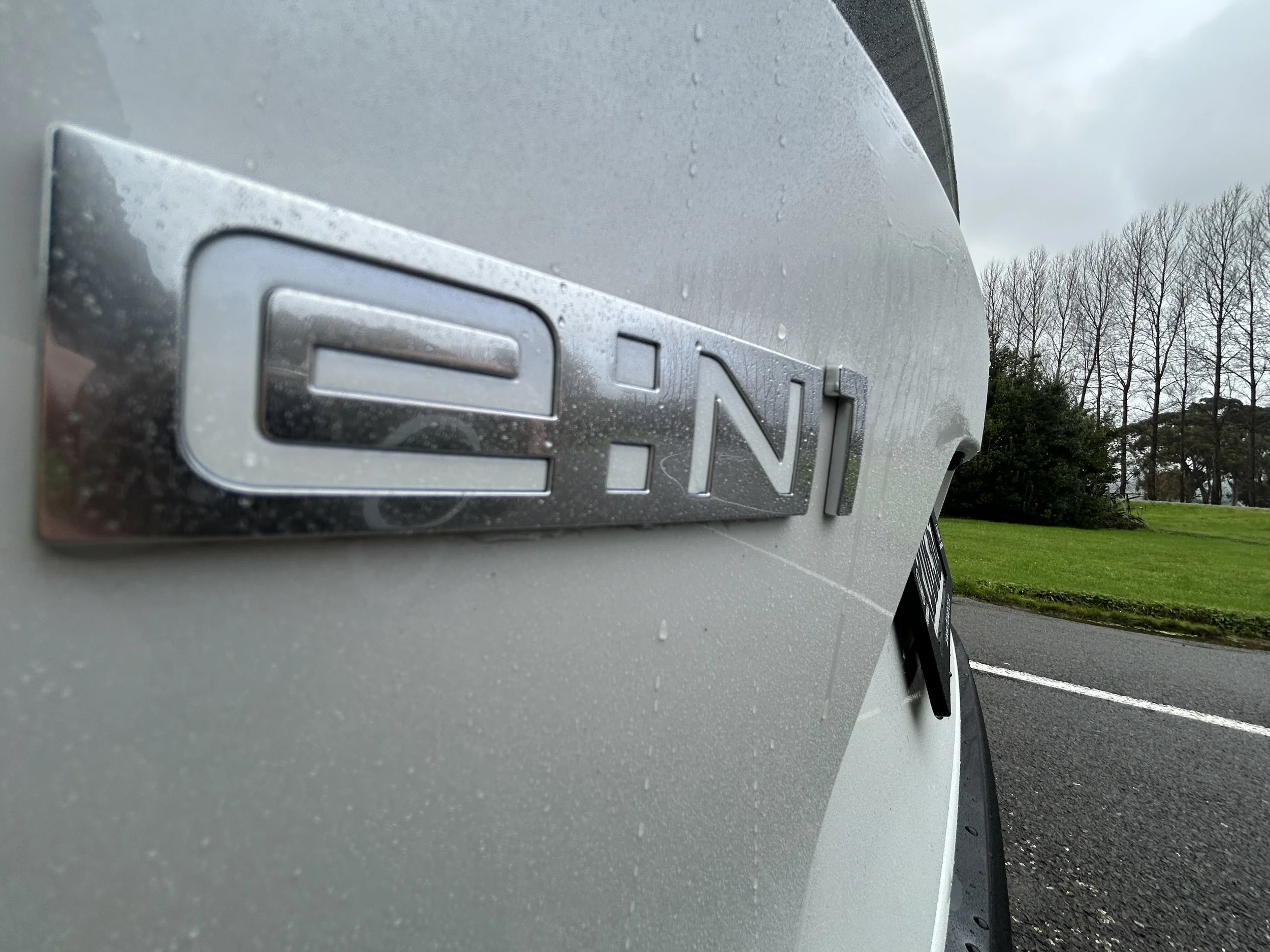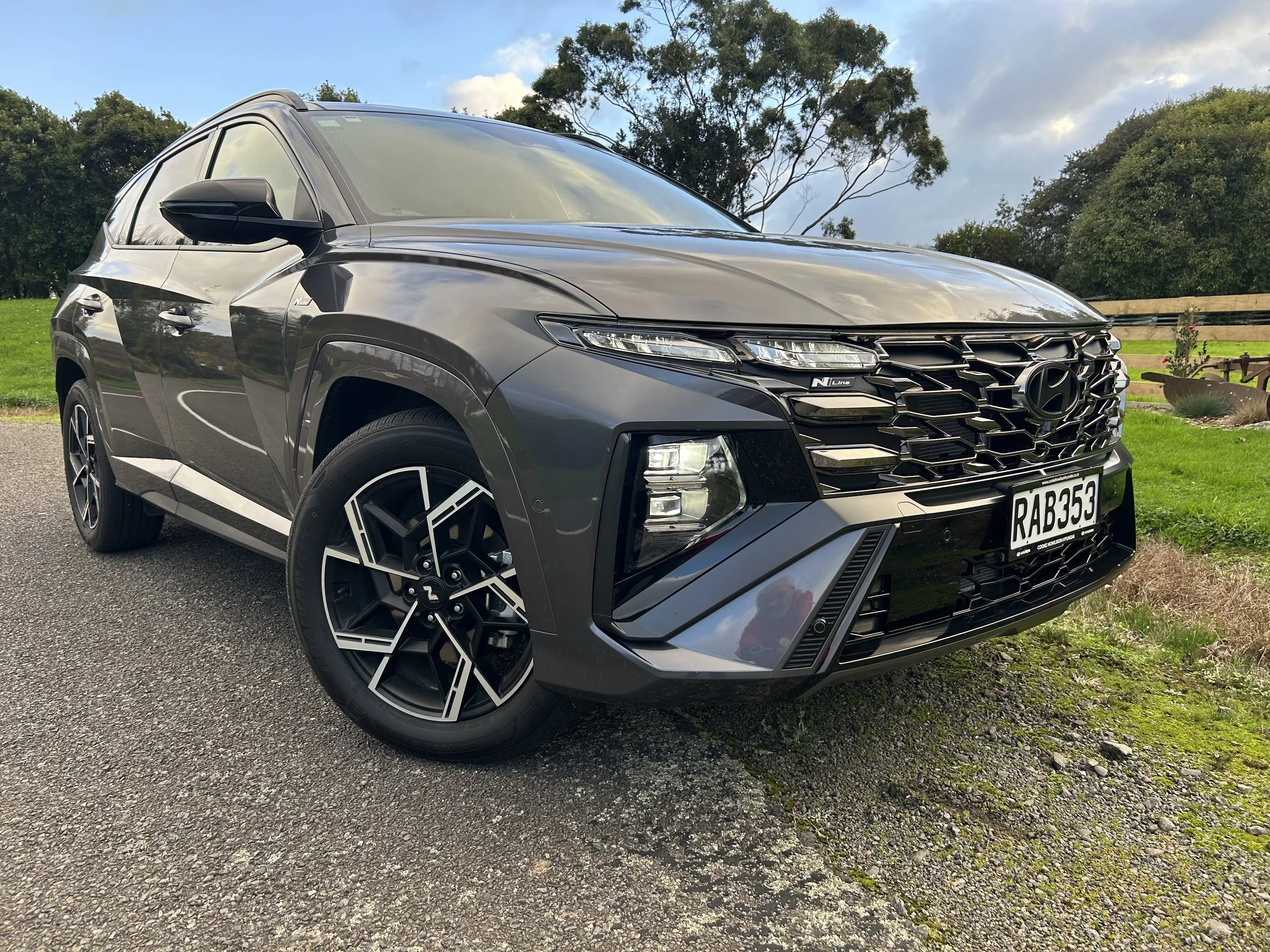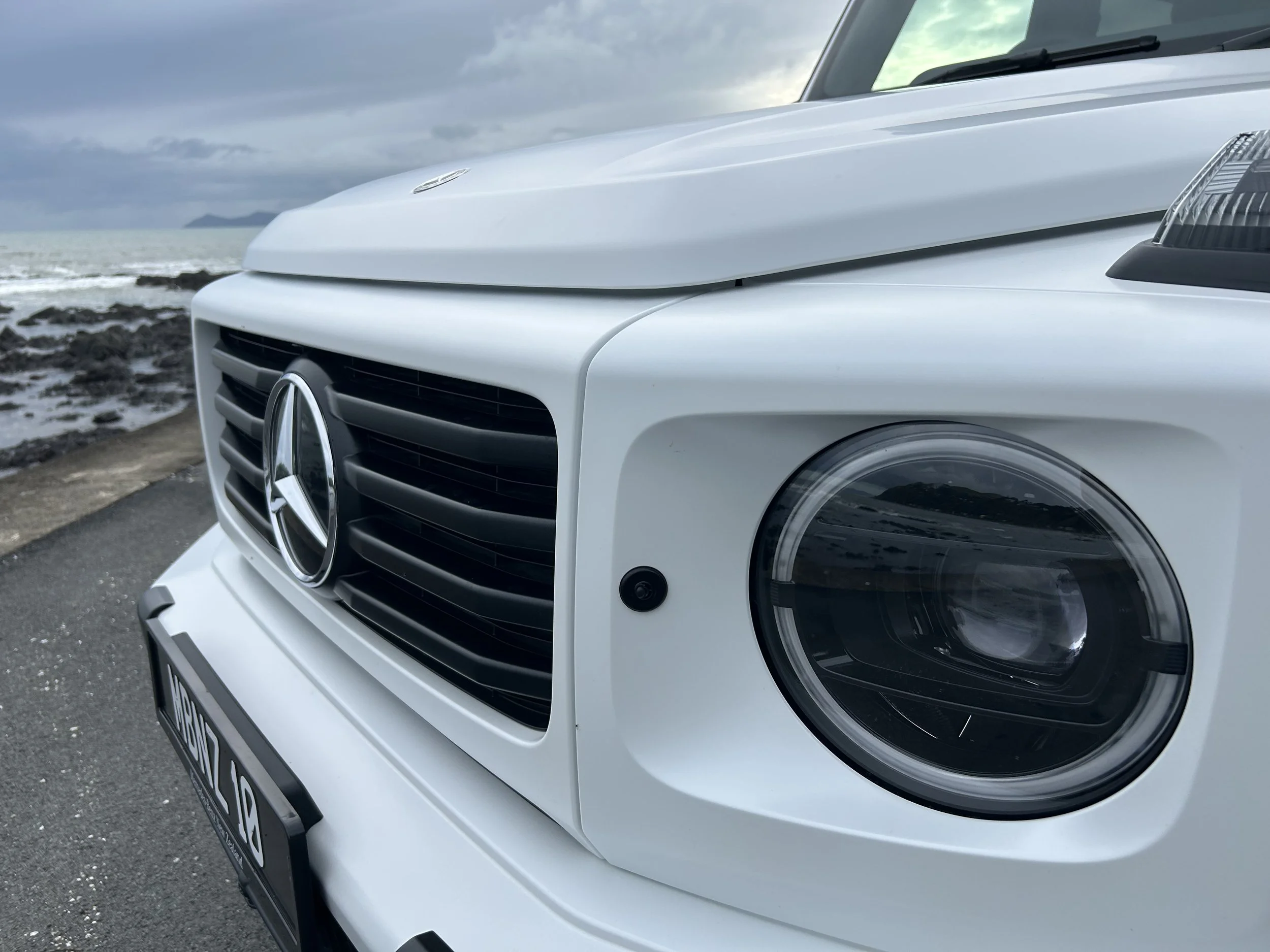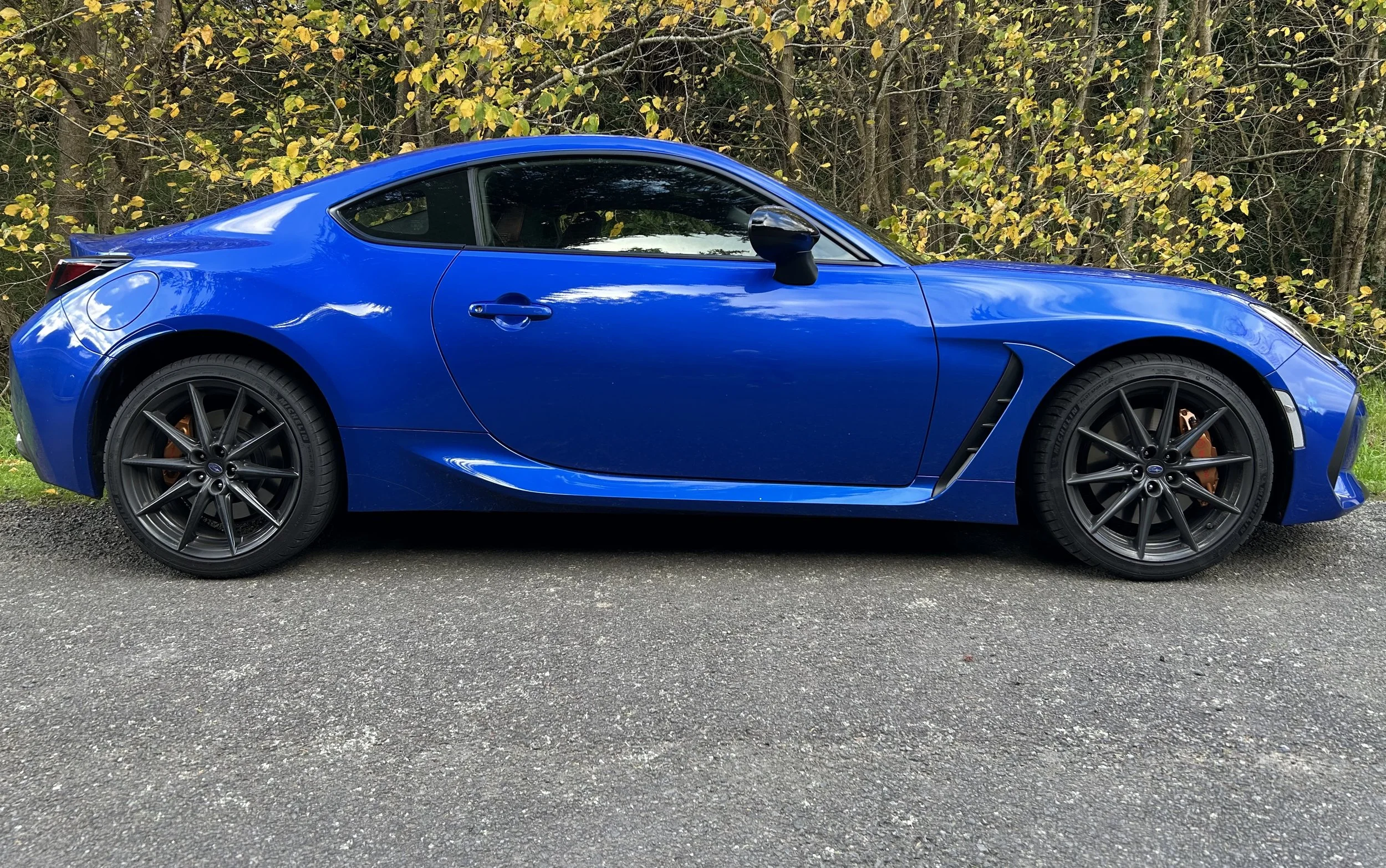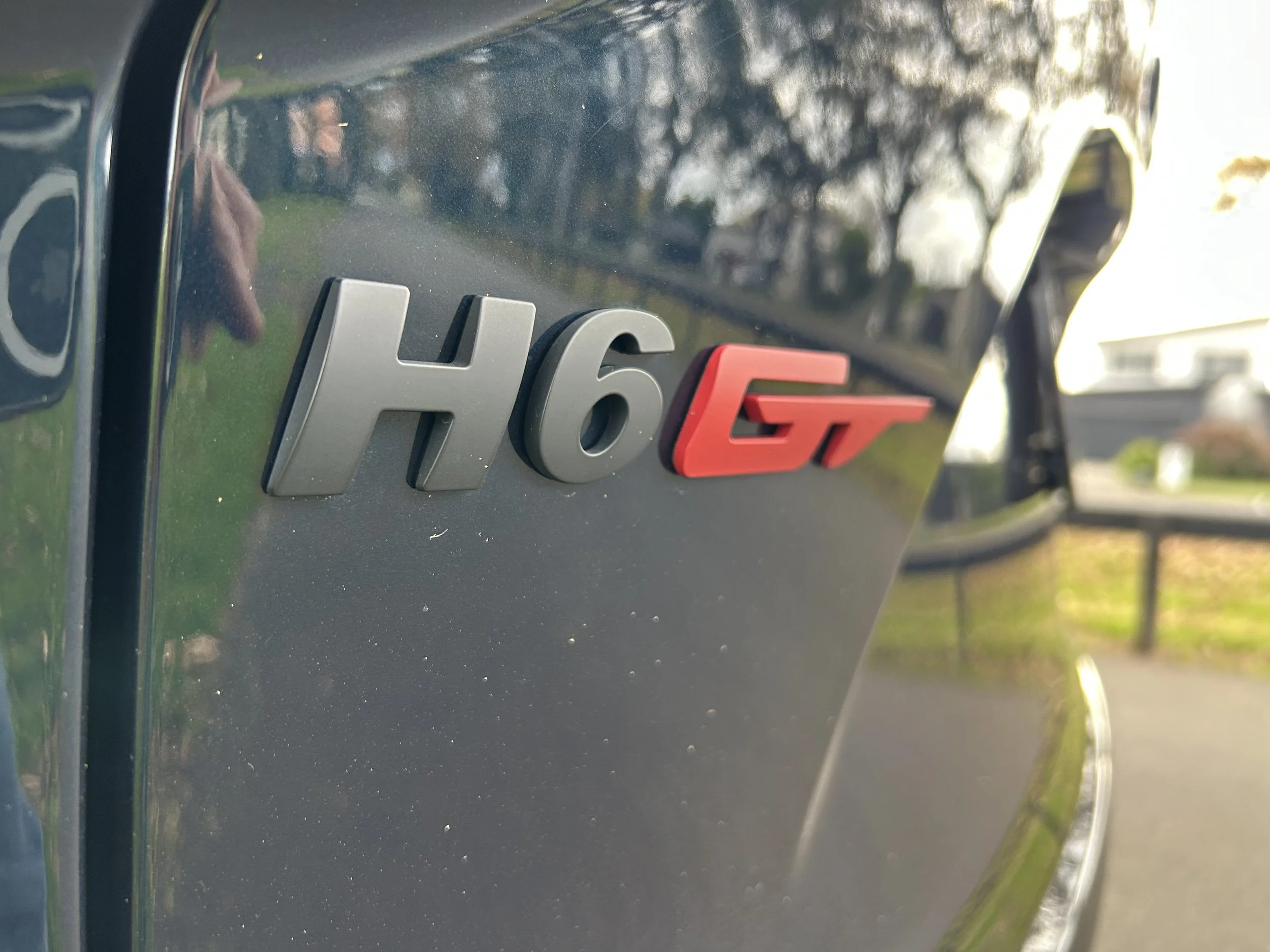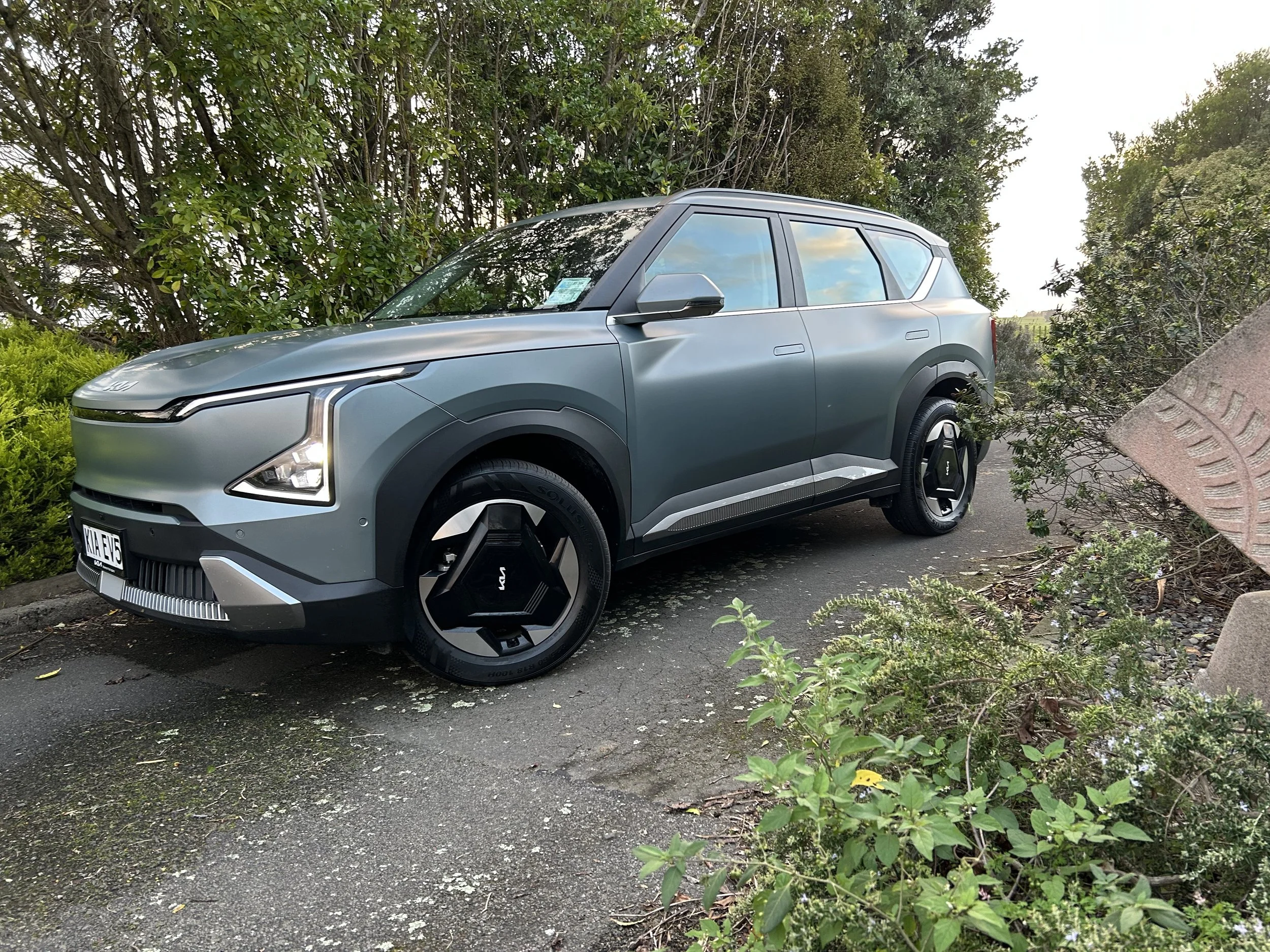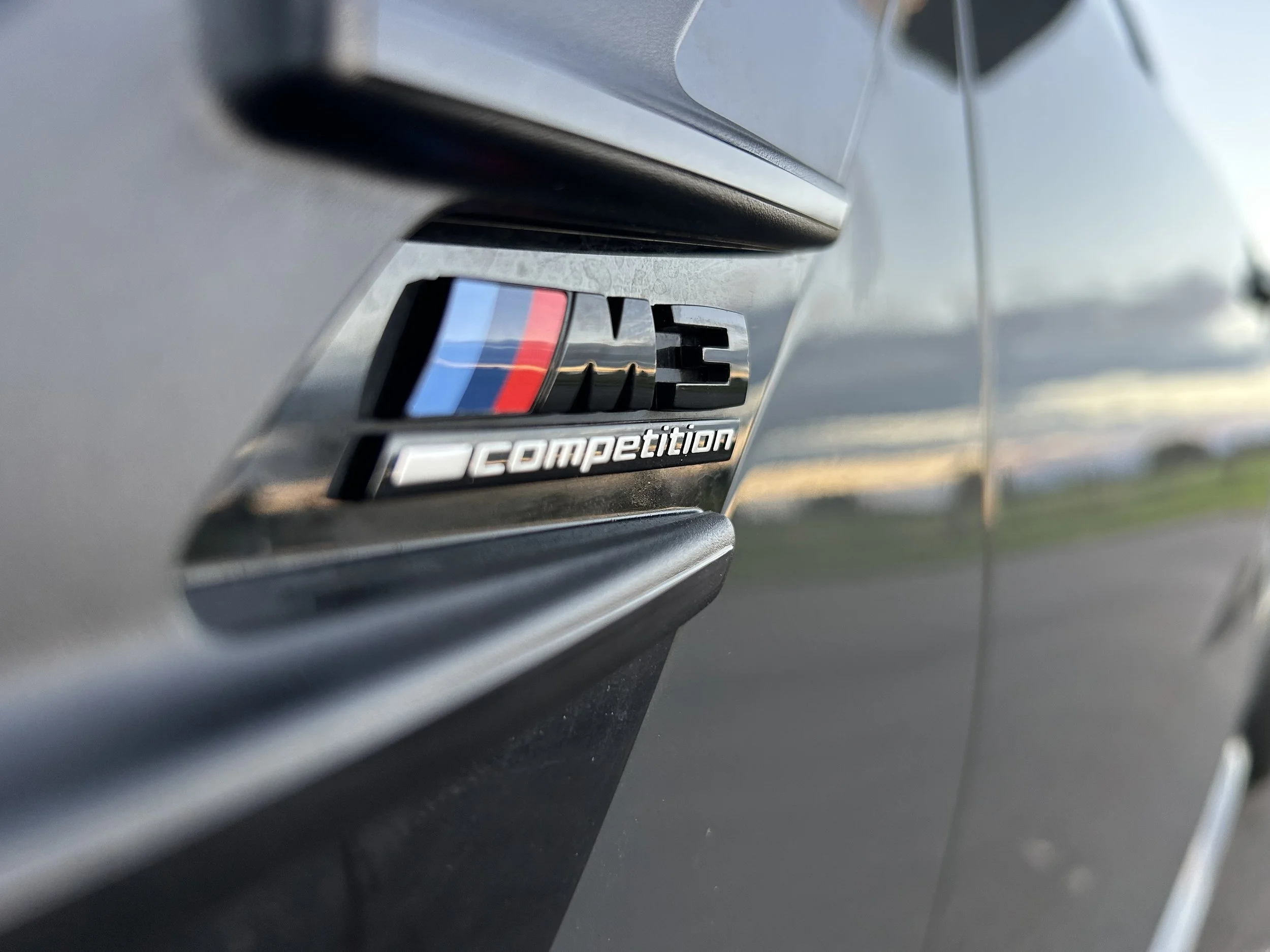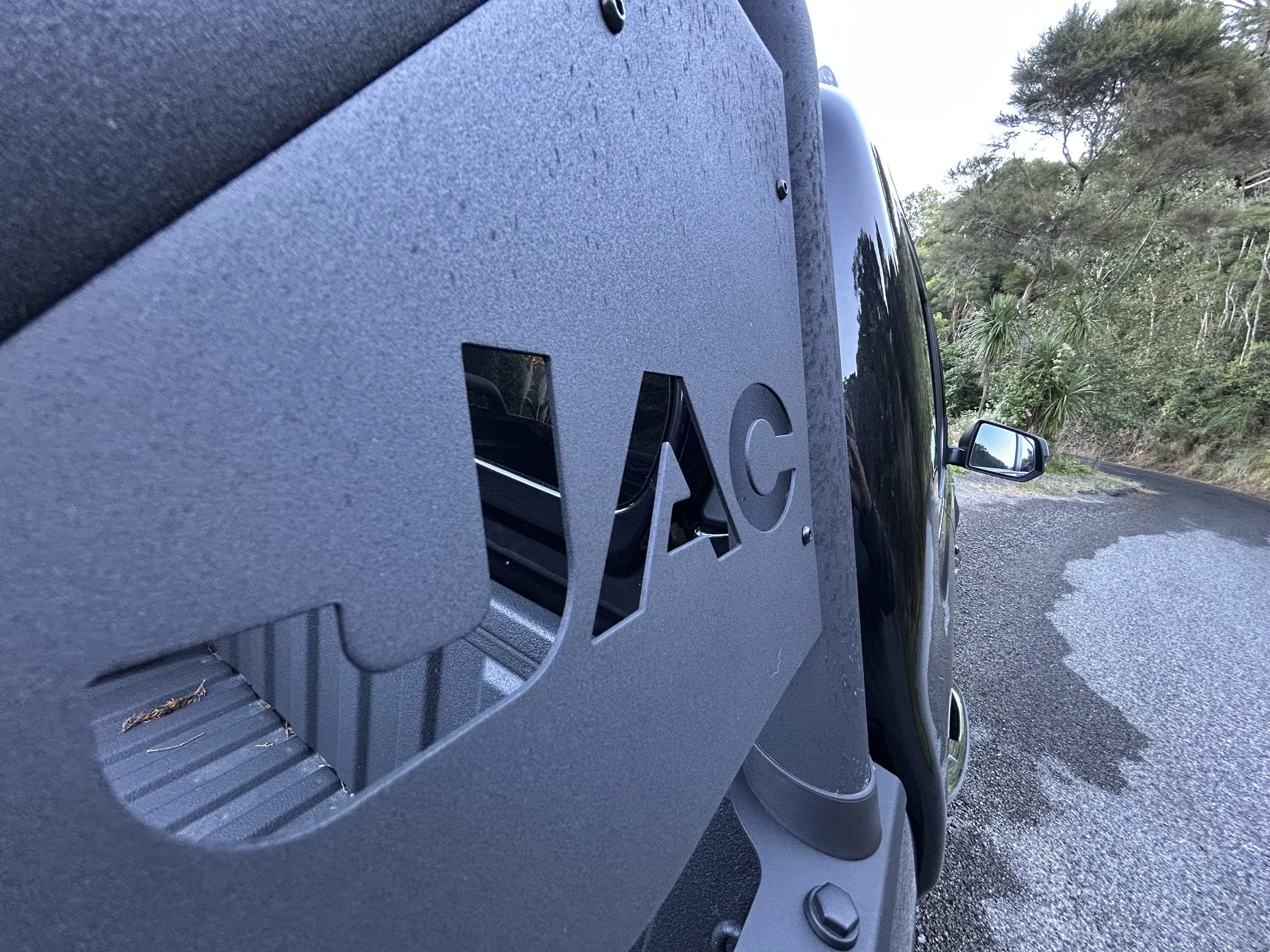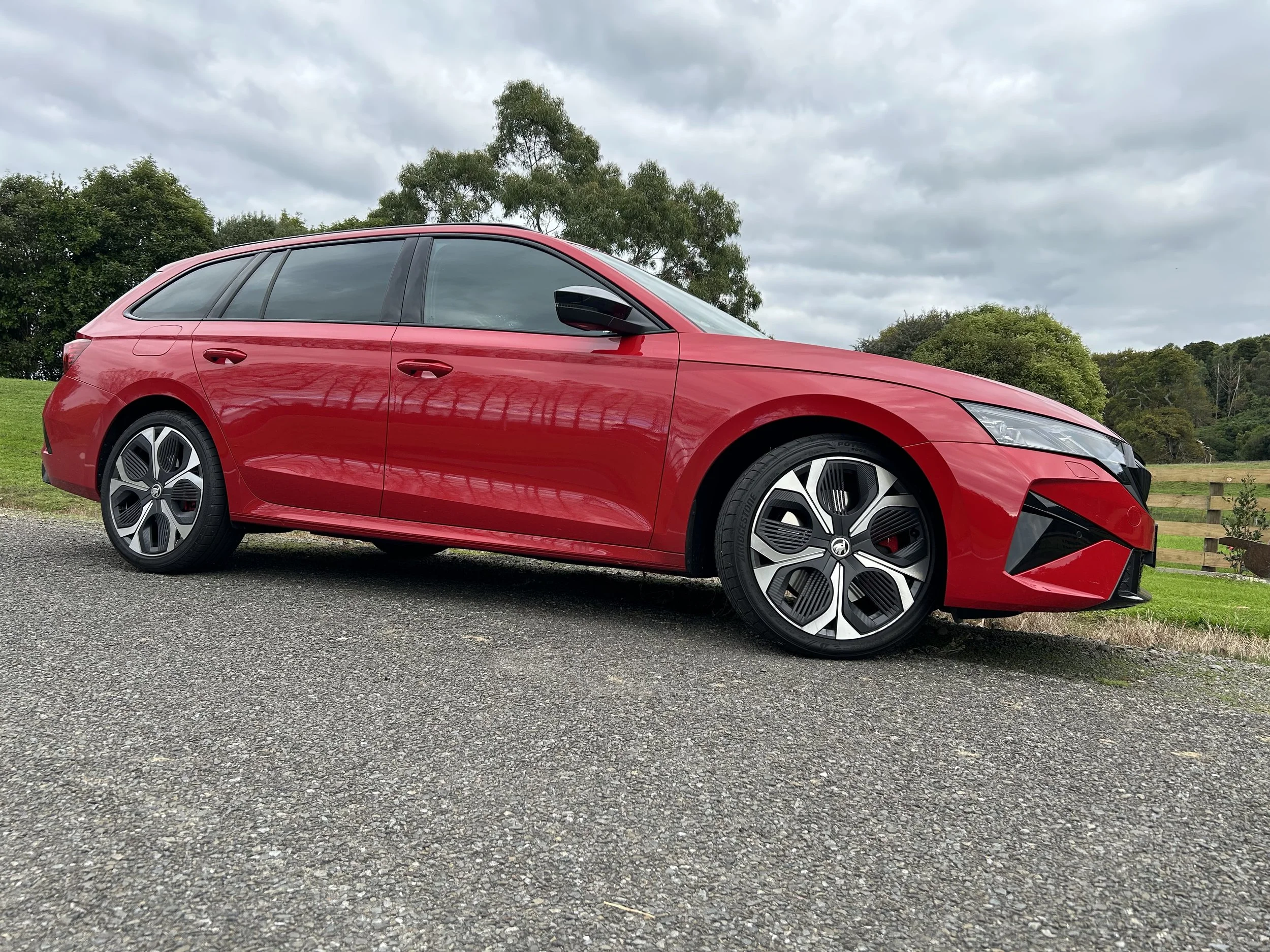Subaru Forester first drive: New gen still game
/Expect to see a lot of this new model; but can the crucial hybrid prove that sequels are better than the original?
ONE of the originals of the compact sports utility sector, the Subaru Forester has stood out as a reliable, mud-ready go-getter.
Functional looks, decent practicality and better-than-light off-road ability has been a big selling point, and rightly so. Many larger, bulkier SUVs have been shown up by this car.
So what do we get this time around? To keep sweet in the salient medium SUV zone, a fast-paced sector accounting for more than 40 percent of all new model sales, six models replace five. All smarter than their predecessors, all costing more; especially at entry level, where there’s a $5000 hike.
Subaru’s Global platform that underpinned the previous generation car as well as the current Impreza, Crosstrek, WRX and Outback serves here and the focus remains on the familiar 2.5-litre four-cylinder boxer, in two genres.
Three stick with the tried and tested conventional internal combustion format, pretty much plucked from the outgoing car.
Three have a second stab at petrol-electric, still labelled ‘e-Boxer’, but no longer developed in house. This time Fuji’s called in a powerful friend (and shareholder), one which knows this tech better than any other, to help sort out an implementation it fluffed when attempting in-house.
Technically-speaking, Toyota’s provision of the guts of the ‘strong hybrid’ system, with 88kWs’ worth of electrical assistance, including a 1.1kW battery in support, is a fresh start to Subaru’s petrol-electric ambition that should lend better aptitude and outcomes.
With this outputs are 121kW from the engine alone, rising to 145kW combined, with torque of 212Nm. So 7kW more power, 35Nm less torque than the pure ICE, for a premium of $3000-$5000 in common entry AWD, a new mid-family Sport and flagship Touring trims.
Lineartronic continuously variable automatic transmission (CVT) maintains, with eight rather than seven gear steps. The system for the hybrid is more bespoke than it feels, being reliant on the combination of its primary traction motor and a smaller starter/generator (both housed inside the transmission case) to mimic the petrol’s characteristics.
That secondary unit also starts the engine and diverts excess power to generate electricity for the battery. The car will roam on electric alone at up to 30kmh and lends support in combination otherwise, to point claimed range is in excess of 1000km.
As keen as it is to adopt Toyota tech, Subaru drew the line at taking Toyota’s all-wheel-drive technique. That would have meant abdicating Subaru’s signature permanent symmetrical all-wheel drive system. No chance.
Subaru contention shelving the market leader’s method - whereby front wheels are driven by an engine, rears by an electric motor, the two in complete isolation - for a driveshaft-included preference that rotates all four wheels is better for off-roading and all round traction was well proven on this event.
The hybrid Foresters were as adept as the petrols in conquering tough terrain and felt equally confident on gravel. That Forester can power all four wheels on petrol or electric power, or both, is also of potential benefit.
It’s a far more amenable system than the previous kind; the electric involvement is more obvious and much better integrated. But how much of a step forward it really is will be subject to be debate.
But having hybrid also means compromise in respect to braked towing capacity; the petrol is bolder there and also has a heftier tow ball down weight. Also, petrol Foresters have a full-size spare wheel. Hybrids don’t. The spare wheel bay takes Toyota’s battery. So it has a repair/inflator kit. I’d feel feel a little edgy about taking that level of remedy too far into the wilderness. Also, cargo capacity degrades a touch. Whereas petrols deliver 496 litres with the seats up and 1667L with the second row folded, the hybrids have 484L/1655L.
The deciding factor for hybrid is always efficiency. And that’s where it gets tricky. Subaru’s raw data shows clear give and take. The petrols are actually slightly thirstier than before, the hybrid only slightly thriftier than the previous system: Both by 0.5 litres per 100km. And the CO2 outputs from both engines are identical.
Subaru distributor Inchcape fronts in Australia as well as here. Aussie rules applied to fuel consumption data; so everything was to the NEDC standard which is now very secondary to our 3P-WLTP. Basically, we have trust issues.
Conversion requires EECA’s calculator. The petrol electric’s 6.2 litres per 100km adjusts to 6.9. The petrol’s 7.9 raises to … 8.8. And CO2 as counts of 140 and 180 grams per kilometre n NEDC both adjust to 200g. Which seems … strange.
The launch programme from and return to Christchurch took us inland to Lake Heron high country station, with overnighting at the Fable Terrace Downs golf resort, and allowed good exposure to powertrains consuming 95 octane, a factory-preference regardless they will stand being on 91. I was allocated four versions; two pure petrol, two hybrids, every one for 80-ish kilometres. We drove alone on all the but the last leg. We also paired up to take a hybrid and a petrol on the 12km off-road section.
The Touring hybrid I started in and handed over at Rakaia Gorge ran lean in Christchurch traffic, on occasion on electric alone. But with far more time on the open road, the average for the stint climbed to 7.6 litres per 100km.
The base AWD hybrid driven from there to Lake Heron had 1434km on the clock, so was the highest mileage car I experienced. It returned 8.3L/100km.
I was allocated a pure petrol Sport from Lake Heron to Terrace Downs, and saw 8.7L/100km. The next day’s run was from there to the airport, with a petrol Touring, which registered 9.2L/100km. My passenger had a plane to catch; it was also a cold morning, so heating was on.
Trip computers were completely freshened before each individual drive. The hybrid being most useful in urban driving would true to type for this technology. And that’s great. But it’s surely not the highest priority strength Forester buyers look to.
Neither Forester powertrain is going to blow your socks off, but the operability quality is undoubtedly better. The pure petrol is a fairly quiet engine, but the hybrid is has even less noise at low speeds, making it feel quite relaxed and refined.
The maker proposal that the electric ingredient far more actively enhances the e-Boxer’s initial oomph is also solid; it’s a far more influential partner than the old set-up but also far more even-handed in delivery.
All the same, as much as you can feel the assistance, how long it lends it requires thoughtful use of the regenerative effect, as it only applies in the normal driving mode. Stay in Sport too long and the battery will deplete to point where it will deactivate EV only activity.
In respect to overall dynamic demeanour, revising the platform that underpinned the previous generation car is a great benefit. More welding, more industrial adhesive equals greater body stiffness.
Tweaks to the car’s suspension are also important to note, because having been noticeably jiggly and firm in past generations, it very much now achieves the level of supple quality that has only been found with the Outback.
As with the larger wagon, the penalty for that graceful, loping and composed gait (and it’s high ride height) is that it doesn’t handle quite as well as a conventional station wagon.
That said, body lean is well controlled and although there isn't too much feedback through the steering wheel, it's quite precise.
Smooth and steadfast is the on-seal aptitude, but the real brilliance of the suspension tuning comes when you hit rutted surfaces.
Subaru hasn’t done rallying for a long time, but the way in which it conquered the rutted road out to Lake Heron suggests it has retained the know-how to developing a suspension up to sailing over ruts and ripples with confidence and neat poise.
When taken in tougher country, it kept its cool. The 220mm of ground clearance is decent but it’s also the quality of the AWD, and the X-mode system (more advanced in Touring and Sport than base), and ample axle articulation that counts.
Finessing Lineatronic continues to be a Subaru focus; here it’s said to be more refined and more responsive, a result of the software having been updated, to lend a more ‘natural’ feel. So they say.
But a CVT is a CVT .… if you cruise and light foot, it’s fine. If heftier acceleration is demanded, whereas a normal automatic might change down by one or two gears, but seldom send the revs soaring, Lineartronic still has potential to switch the ratio to something needlessly short. As before, there’s more reward from driving in an easy-going manner than really going for it, but that attunes to the car’s entire persona.
Meeting the car in the metal is a matter of reacquaintance, but noting a significant styling change. Clearly they haven’t just simply dusted off the old car’s drawings for a sixth time around. On the other hand, neither have they started wholly afresh.
But why would they? Aside from being a small, relatively low volume brand with limited resources, Subaru will have considered Forester’s massive success in its previous evolutions.
Anyway, in basic shape it’s still recognisable, but in detail, quite different. A bit more conventional, a bit less blocky and definitely more modern. New headlights, a new grille and new taillights are 101 start points in any redesign, but what’s also obvious are some subtle differences, notably to the window line. Perhaps the look is a little less rugged now - in overseas markets, there’s a Wilderness model that plays up that theme - but it's still got chunky body cladding all round and tough-looking roof rails.
One oddity in the exterior design is how the rear bumper has sizeable exhaust-effect trims inlaid in the plastic on either side. But the car only has one tailpipe, so symmetry is ruined.
Forester’s evolutionary upsize continues to show up within the cabin; with plenty of room for those in the front and ample rear space.
Fitting four adults in the car will be no trouble whatsoever and it has two ISOFIX child seat mounting points on the rear bench, with one in each of the outermost rear seats. Wide opening doors ensure access is very good.
In terms of practicality, there’s are big bins in the doors including room for bottles, two cupholders in the centre console, a deep lidded bin/armrest between the seats and a decent glove box. The back area provisions adjustable air vents, multiple map pockets and two cupholders in the fold-down centre armrest. A range of tie-down points, bag hooks and storage trays are provisioned in the boot.
Forester steps up to taking a new portrait-oriented touchscreen, plucked from the Outback, used to access all the major infotainment functions, plus a lot of car settings, including X-mode and the safety assists. It isn't the most modern touchscreen around, but is an improvement on what went before and whereas some systems seem deliberately over-complicated, this one is mostly straightforward. It may not be exciting, but it works, and that's basically what Subaru is all about these days.
Underneath there are proper buttons for the climate control and, below those, a big phone charging pad, as well as USB-C and -A outlets, though these are a back up as it has wireless Apple CarPlay and Android Auto integration. Ensure your phone has mapping as it’s only provisioned by Subaru to the Touring.
The cabin is a bit of a mess in design terms, mainly due to some switchgear being in odd locations. Given it’s importance, it might seem perplexing why the button activating the EV mode is hidden way down on a button bank by the driver’s door. Surely having it front and central as a screen haptic might have been better?
The cabin still holds some budget plastics. But the driving position is fine and all the primary controls are logical. The instrument panel in the petrol holds an analogue speedometer and tachometer; in the hybrid the latter is ditched for an extravagant economy meter.
Subaru’s ‘EyeSight’ driver assistance technology has a wider view camera than before and achieves five new features and, in all has 15 different functions, including an emergency stop system that will purportedly slow and stop the car if the driver becomes unresponsive. I wasn’t brave enough to feign that.
The driver monitoring system has become incredibly zealous; it triggered when I reached for the radio tuner dial. The traffic sign recognition is also sharper-eyed now. Also standard to Forester are autonomous emergency braking and lane departure warning. A five star ANCAP announced on July 10.
The base models run 18-inch alloy wheels and have dusk-sensing LED headlights with self-levelling, steering-responsive headlights, LED fog lights, keyless entry with push-button start, and tyre pressure monitoring. They also have dual-zone climate control, rear air vents, a leather-trimmed steering wheel, cloth seats, heated front seats, an auto-dimming interior mirror, and one-touch electronic rear seat release.
Forester Sport petrol takes a dark metallic finish for the 18-inch alloy wheels, gets a sunroof, is the starter for a more sophisticated X-Mode terrain system and has a ‘premium’ instrument cluster, green highlights and water-repellent grey and black seat trim. Hybrid Sport has low-profile roof rails, 19-inch alloy wheels in an appealing bronze finish, a bronze instrument panel finish and a 12.3-inch instrument cluster.
Tourings add leather and Ultrasuede upholstery, a leather gear shifter, brown stitching for the steering wheel, and front seat ventilation. The Touring petrol is on 18s, the Hybrid has 19-inch wheels.Go high and the six-speaker audio is swapped out for a 10-speaker Harman Kardon premium system.
A new trend is that Forester petrols are effectively lineball priced with the two of the three available editions of make’s flagship product, the Outback, which presents in virtually identical tune but with a less fulsome specification.
Outback is traditional Subaru NZ’s biggest seller, but it’s right at point of retirement; the new gen car is already roaming North America.
Right now entry and Sport Forester petrols exact-match to the entry Outback and Outback X respectively; Forester Touring is $3k shy of the Outback Touring.
Will the bigger car lose sales to its sibling? Jerry Delaney, head of distribution for Inchcape, the Subaru distributor, considers that’s likely.
Whether Forester takes over as No.1 and keeps it when new Outback comes next year? That’s the bigger question.
The writer attended as a guest of Subaru NZ, with travel, accomodation, meals and a small gift provided.

